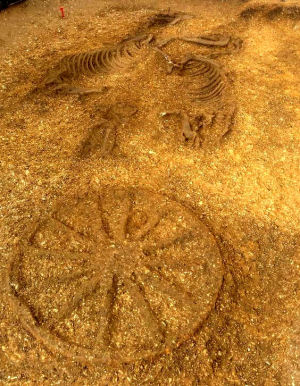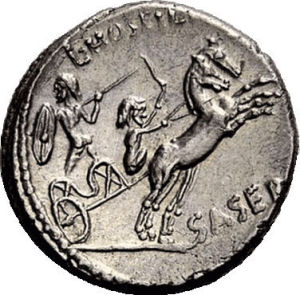|
 Pocklington's Iron Age excavation on Burnby Lane has been nominated for a prestigious national award that now goes to a public online vote. It is one of five nominations for 'Rescue Project of the Year' by 'Current Archaeology' magazine, the UK's leading archaeology publication. Pocklington's Iron Age excavation on Burnby Lane has been nominated for a prestigious national award that now goes to a public online vote. It is one of five nominations for 'Rescue Project of the Year' by 'Current Archaeology' magazine, the UK's leading archaeology publication.
Current Archaeology’s annual awards celebrate projects, publications and people judged to have made outstanding contributions to archaeology.
The simple voting process is done online at:
https://www.archaeology.co.uk/awards/rescue-project-year-2018.htm
A spokesperson for Pocklington Heritage Partnership, the group set up this year to establish a museum facility to keep the finds in Pocklington, said: “Burnby Lane just keeps coming up trumps and producing further surprises, and there will be more still to come out of the post excavation analysis. The nomination is brilliant news, but we need all the support we can muster, and we hope all those who have shown an interest in the excavation will get voting.”
The dig, rated of international importance, produced some unique finds, and is likely rewrite the Iron Age history of Yorkshire. It is the biggest such excavation in England for almost 50 years, and the first time such a cemetery has been discovered in a lowland landscape.
 |
An Iron Age coin depicting a Chariot
(n.b. this was not found in Burnby Lane) |
The dig was commissioned by David Wilson Homes ahead of their Pavilion Square housing development; and the MAP Archaeological Practice team unexpectedly found a thousand artefacts, mainly Iron Age but some Saxon, from 175 burials in 87 square barrows. Grave goods included a sword, spears, knives, remains of a shield, glass and amber beads, brooches and intact pots. But perhaps the most remarkable find was in the excavation’s final days, when a chariot was uncovered in the roadside verge at the front of the development where it had somehow survived for 2,500 years, the first chariot and charioteer with two horses attached discovered in Britain since an excavation at nearby Arras in 1817.
Pocklington items have been sent to the British Museum, Harvard, and universities across England for analysis, and are expected to disclose more; including hopes that DNA and isotope testing may reveal links between the Iron Age peoples of East Yorkshire and Northern France. The preliminary project report is expected to be published in 2018.
|

